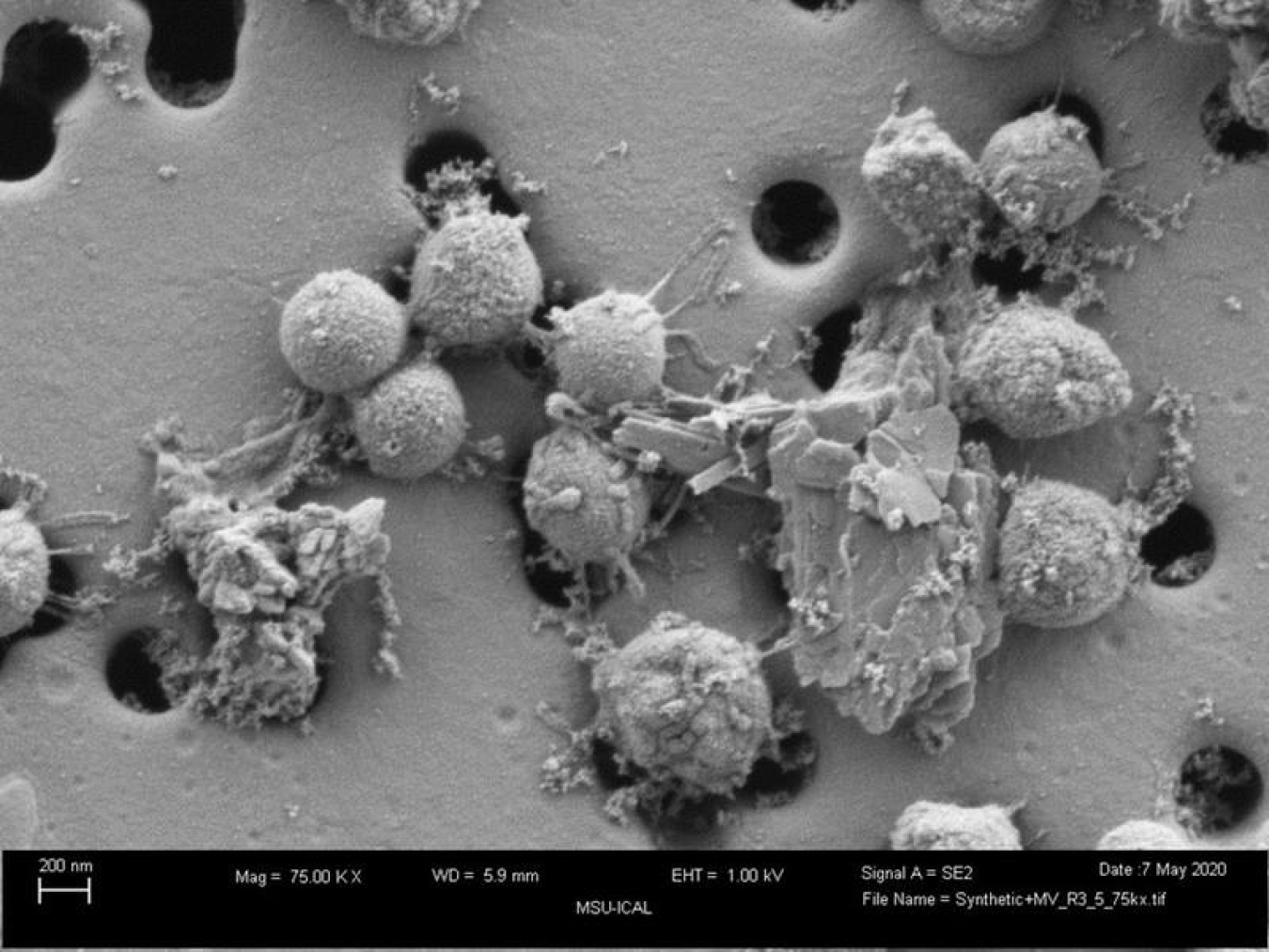
The Science
Pyrite, also known as “fool’s gold,” is an abundant iron sulfide mineral in the Earth’s crust. All organisms need iron and sulfur to grow. Because pyrite does not dissolve in oxygen-free conditions, scientists previously thought that organisms could not use pyrite in the absence of oxygen. This new research showed that certain single-celled microorganisms can dissolve pyrite in the absence of oxygen. These microorganisms mine iron and sulfur from the pyrite to build biocatalysts needed for growth.
The Impact
Common mining practices extract pyrite and expose it to oxygen to leach and concentrate iron and other metals. This process can generate extremely acidic and toxic runoff, commonly referred to as acid-mine drainage. Recent research showed that single-cell microorganisms can dissolve pyrite without oxygen and that they can do so without generating acid. The microorganisms use the iron and sulfur from pyrite to grow by converting these elements into enzymes. These enzymes are also useful for biotechnology applications such as biofuels and fertilizer. Cells that bio-mine pyrite hyperaccumulate iron, meaning they have higher concentrations of iron than the surrounding soil. This ability highlights their potential application for extracting iron and other elements from pyritic ores.
Summary
A longstanding paradigm is that pyrite (FeS2) is stable at low temperature and unavailable to microorganisms in the absence of oxygen and oxidative weathering. Scientists at Montana State University recently showed that methanogens can dissolve pyrite at low temperature and utilize dissolved products to meet the organism’s nutritional requirements for iron and sulfur. Microscopic imaging and growth experiments show that cells require direct access to pyrite to dissolve the mineral and/or to assimilate iron sulfide that forms on the mineral surface. The iron content of cells grown with pyrite is significantly higher than cells grown with other iron sources, with excess iron stored intracellularly in nanoparticles.
These findings demonstrate that pyrite is bioavailable to anaerobic methanogens and can be mobilized in low-temperature, anoxic environments. Given that methanogens evolved at least 3.46 billion years ago, these data indicate that the microbial contribution to the iron and sulfur cycles in ancient and contemporary anoxic environments may be more complex and robust than previously recognized, with potential impacts on numerous biogeochemical cycles. These observations also highlight the ability of methanogens to transform iron sulfide minerals abundant on Earth, such as pyrite, into biocatalysts of biotechnological importance. This includes those that generate biofuels (hydrogen and methane) and fertilizer (ammonia).
Contact
Eric S. Boyd
Department of Microbiology and Cell Biology, Montana State University
[email protected]
Funding
This research was funded by the Department of Energy Office of Science, Basic Energy Sciences. The Montana Nanotechnology Facility, a National Nanotechnology Infrastructure Center member supported by the National Science Foundation, provided support of instrumentation used to image cells.
Publications
Payne, D., Spietz, R.L., and Boyd, E.S., Reductive Dissolution of Pyrite by Methanogenic Archaea. The ISME Journal 15, 3498–3507 (2021). [DOI: 10.1038/s41396-021-01028-3]
Payne, D., et al., Examining pathways of iron and sulfur acquisition, trafficking, deployment, and storage in mineral-grown methanogen cells. Journal of Bacteriology 203, 19 (2021). [DOI: 10.1128/JB.00146-21]
Related Links
Billings KULR-8 Television: Fools gold could be the key to Montana’s energy future
Montana State University news: MSU professor receives $3.4 million DOE grant to continue biomining research
Scraped from https://www.sourcearu.com




